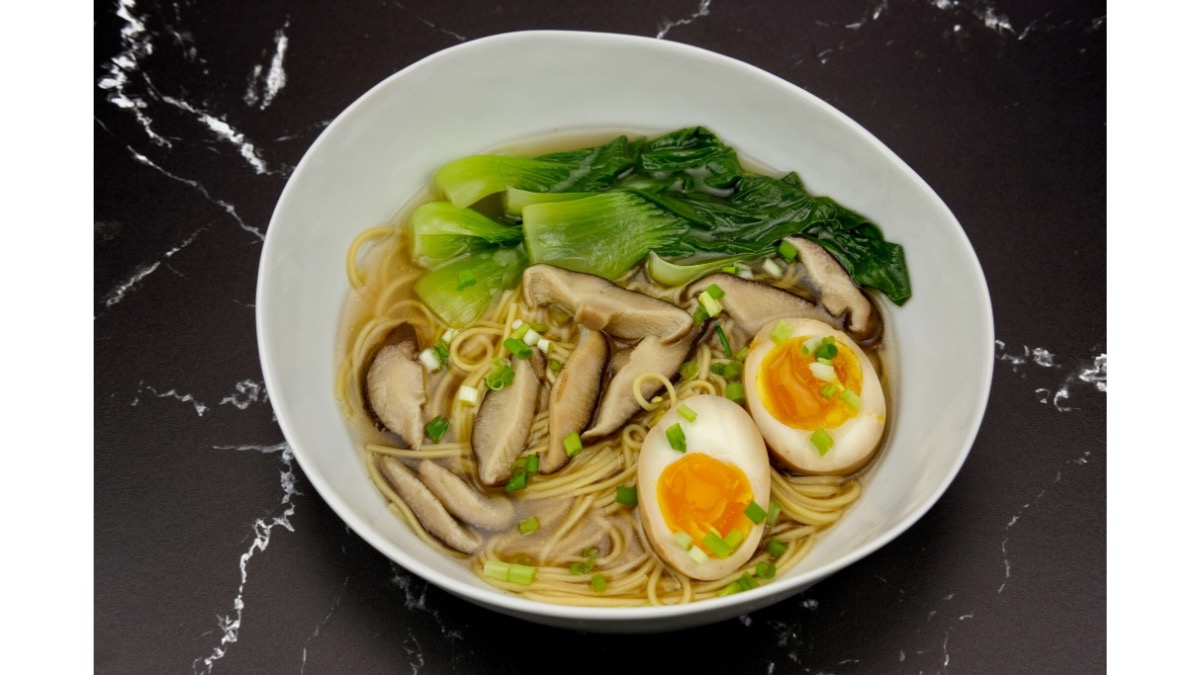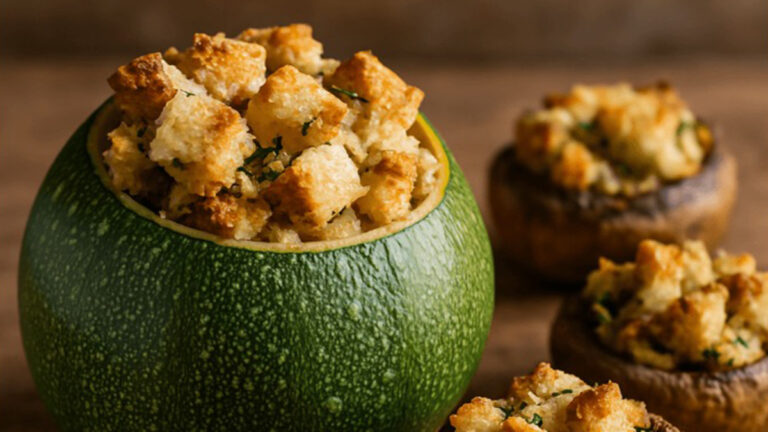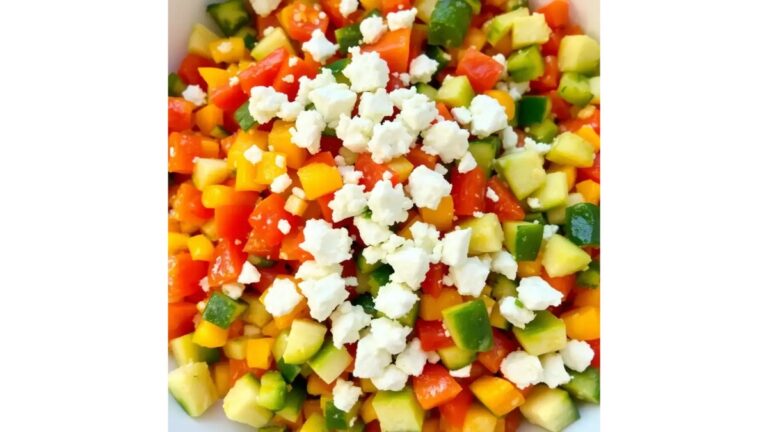Grown-Up, Really Craveable Ramen
About this Recipe
By: Rachel
I grew up with “grocery store ramen”—you know the kind? At the time, it cost about twenty-five cents and consisted of a brick of noodles that you boiled and then flavored with an accompanying packet. It was filling and cheap, but not terribly memorable. These days, I’ve traded that in for a homemade ramen recipe that’s just as comforting but way more flavorful.

The History Behind the Bowl
Authentic ramen is a complex and craveable dish, which most likely originated in China in the late 19th century. It was simple fare, consisting of Chinese-style noodles (chūkamen) served in broth.
Ramen was introduced to Japan in the early 20th century by immigrants living in Yokohama’s Chinatown. After World War II, as Japan faced food shortages, American flour became a cheap alternative to rice, boosting ramen’s popularity. By the 1980s, it had become one of Japan’s most iconic dishes, and today, there are over 25,000 ramen shops in Japan.
What Makes a Great Homemade Ramen Recipe
Today, ramen is most commonly derived from pork or chicken bones and is served with wheat-based noodles. A good homemade ramen recipe layers in all kinds of umami-rich elements—think katsuobushi (skipjack tuna flakes), shiitake mushrooms, green onions, and kelp. And of course, no bowl feels complete without a soy egg (ajitsuke tamago) nestled on top.
Ramen That Feels Like a Hug in a Bowl
A truly good bowl of ramen is one of life’s great pleasures. A dark, complex bowl of ramen broth holds plenty of delicious ramen noodles, flavorful vegetables, and a marinated soy egg. Be sure not to overcook your eggs—those perfect jammy eggs are the best part of the whole experience.
If you’ve never tried making your own, this homemade ramen recipe is a great place to start. It brings together rich broth, chewy noodles, and comforting toppings for a bowl that’s cozy, satisfying, and surprisingly simple to pull off at home.
How to Make This Homemade Ramen Recipe
Below, I explain how to make ramen at home. This homemade ramen recipe is perfect for chilly days or those times when you’re not feeling your best. I’ve included the accompaniments that I like best (and that are easy to obtain at most supermarkets), but feel free to experiment with your favorite flavors and combinations.
Grown-Up, Really Craveable Ramen
Ingredients
For the soy eggs: (Make ahead so they can marinate for at least 8 hours):
- 6 eggs
- ¼ cup (60 mL) dark soy sauce
- ¼ cup (60 mL) water
- 2 tablespoons mirin
For the ramen:
- 6 cups (1 ½ liters) Rich, Delicious, and Worth It Chicken Stock or Flavorful, Umami Vegetable Stock
- 2 tablespoons (30g) sesame oil
- 8 ounces (225g) shiitake mushrooms, sliced (stems removed and discarded)
- 2 tablespoons (12g) ginger, roughly chopped
- 2 cloves garlic, smashed
- 2 baby bok choy, halved
- 12 ounces (340g) dry ramen noodles (such as Hime brand)
- 1 cup (60g) finely sliced green onions
- 6 soy eggs, cut in half horizontally
Step by Step Instructions
Step 1
- In a small saucepan, boil enough water to cover the eggs. Add the eggs to the boiling water, and cook for exactly 7 minutes.
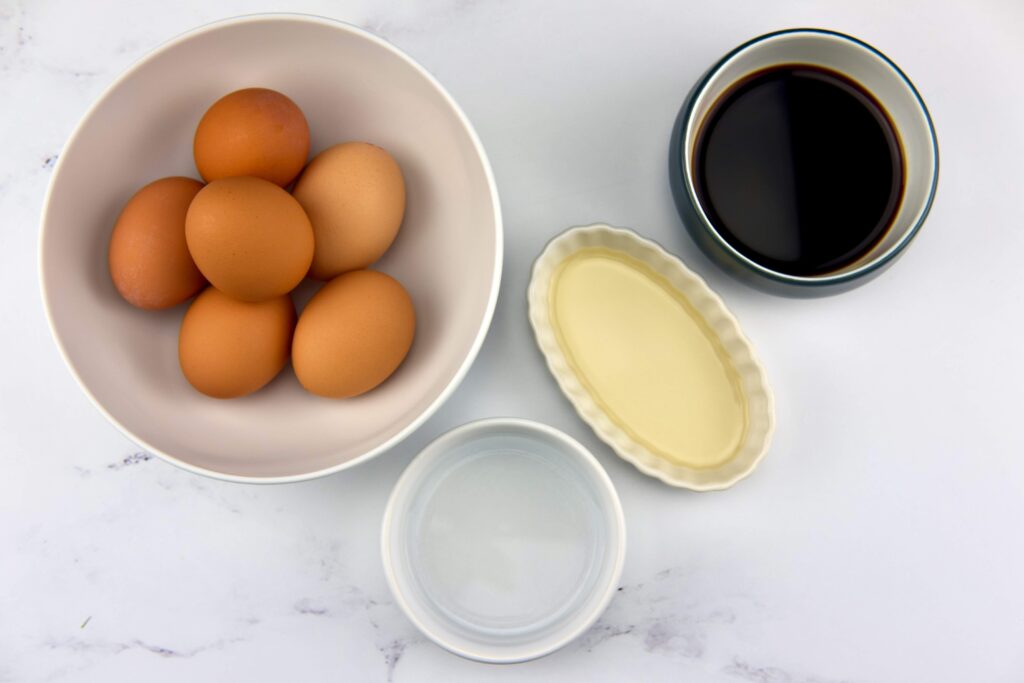
Step 2
- While the eggs are cooking, mix the soy sauce, water, and mirin in a quart-size freezer bag set into a small bowl to avoid spills. Next, prepare an ice bath in a medium bowl.
- Once the eggs have finished cooking, place them directly into the ice bath. Shock for 2-4 minutes, then peel and add to the freezer bag, squeezing out air. Marinate for at least 8 hours before using—ideally overnight, and up to 3 days.

Step 3
- Add the eggs to the freezer bag, squeezing out air. Marinate for at least 8 hours before using—ideally overnight, and up to 3 days.
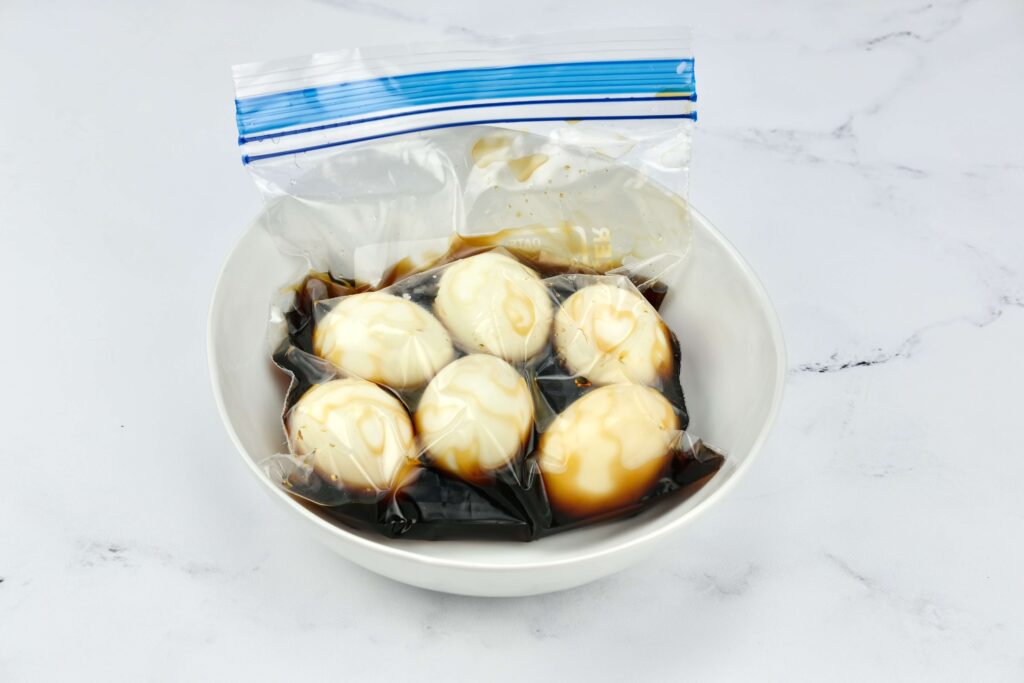
For Ramen
For Ramen
Step 1
- In a large saucepan, heat sesame oil over medium heat. Add the mushrooms, ginger, and garlic, and sauté for 2-3 minutes.
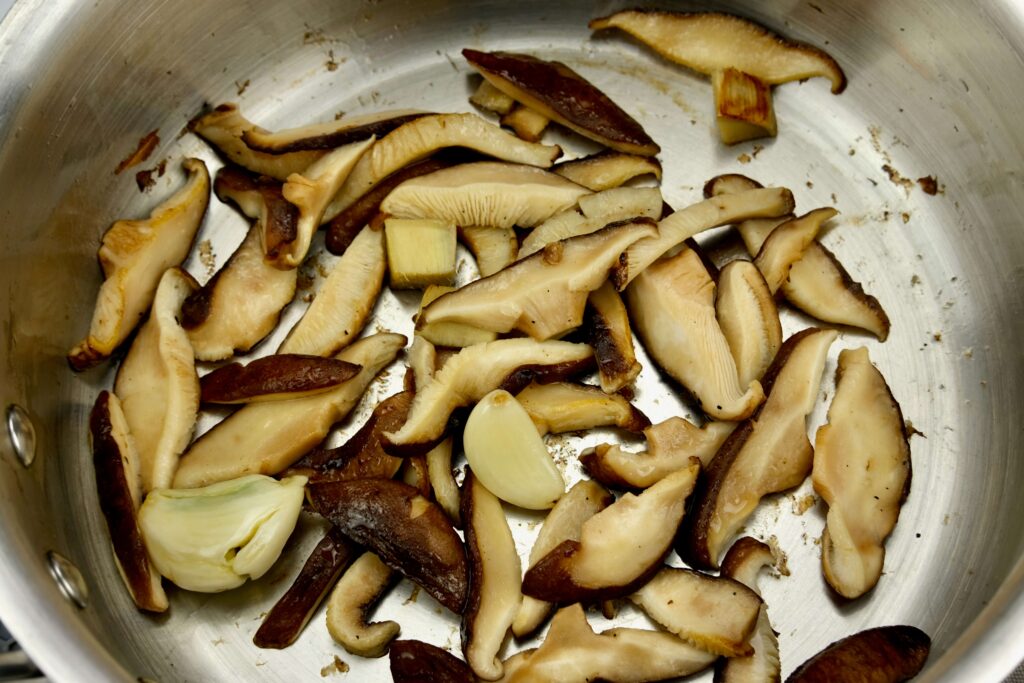
- Add the stock, and simmer for 20 minutes. Add the bok choy and cook for 5 minutes more, or until the bok choy has begun to wilt but is still firm. Remove the ginger and garlic with a slotted spoon.

Step 2
- While the stock is simmering, bring a large pot of water to boil, and cook the ramen noodles according to package instructions.
Step 3
- When ready to serve, divide the noodles and bok choy among 4-6 serving bowls. Top each with chopped green onions and 2 soy egg halves. Pour hot broth over each portion, and serve.
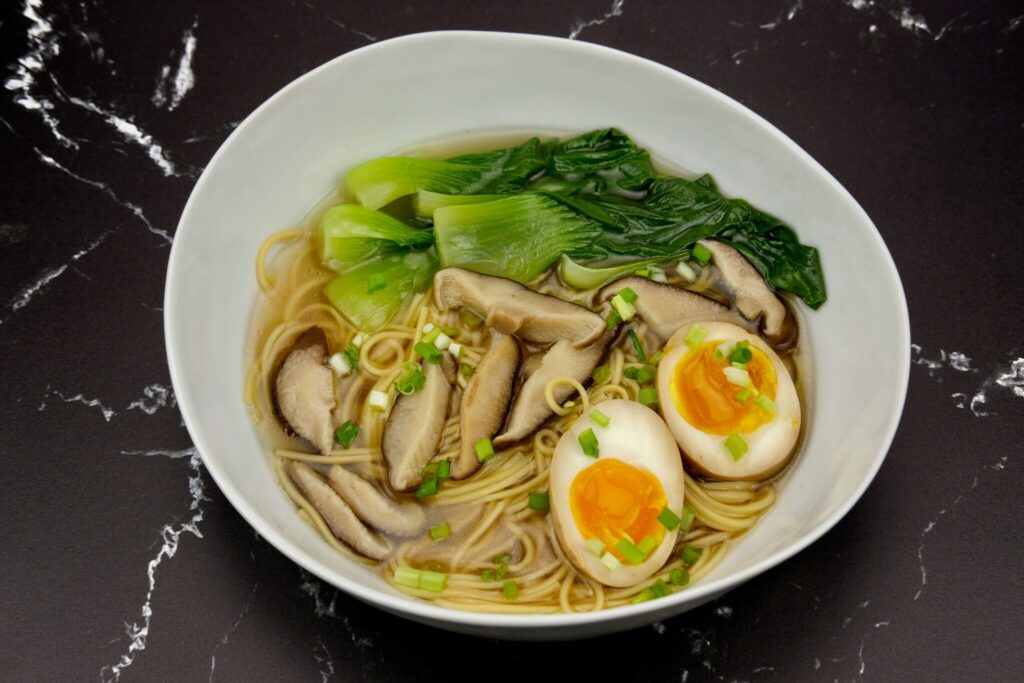
Beverage Pairing
By: Olivia
What grows together goes together, as the old adage goes. So, this ramen dish would be great with sake or a pale lager. For the lager, Sapporo is the ideal choice, but your favorite lager alternative will do, too. In the sake realm, Violet Wine has a large selection of small-format sake. It’s perfect for folks who want to pick up a bunch for variety or for the sake newbies who aren’t ready yet to commit to a full-sized bottle. We highly recommend our best seller: Little Sumo Sake. And in case sake and lager aren’t your thing, we suggest a French Viognier since it is full-bodied and aromatic with a minerality that will balance with this ramen’s bite from the ginger and richness from the eggs.

